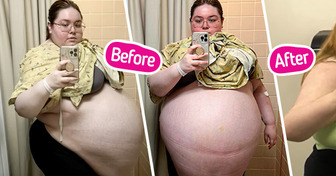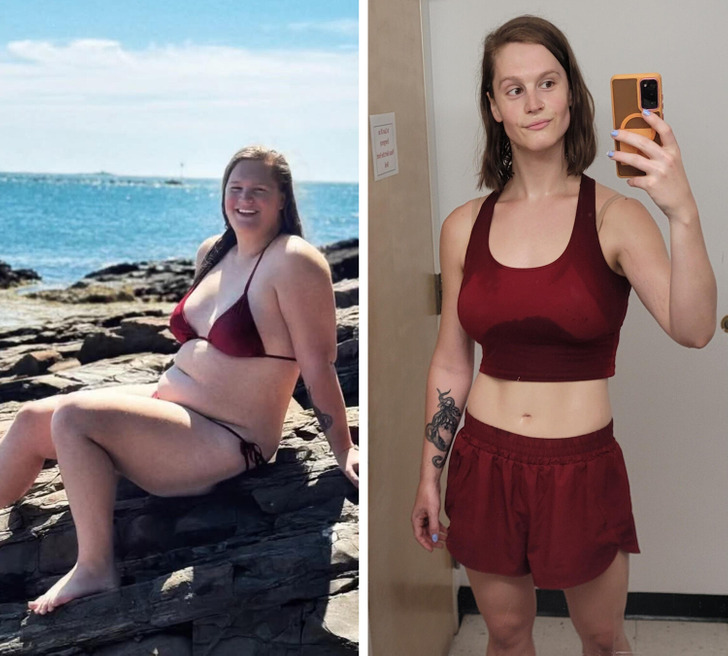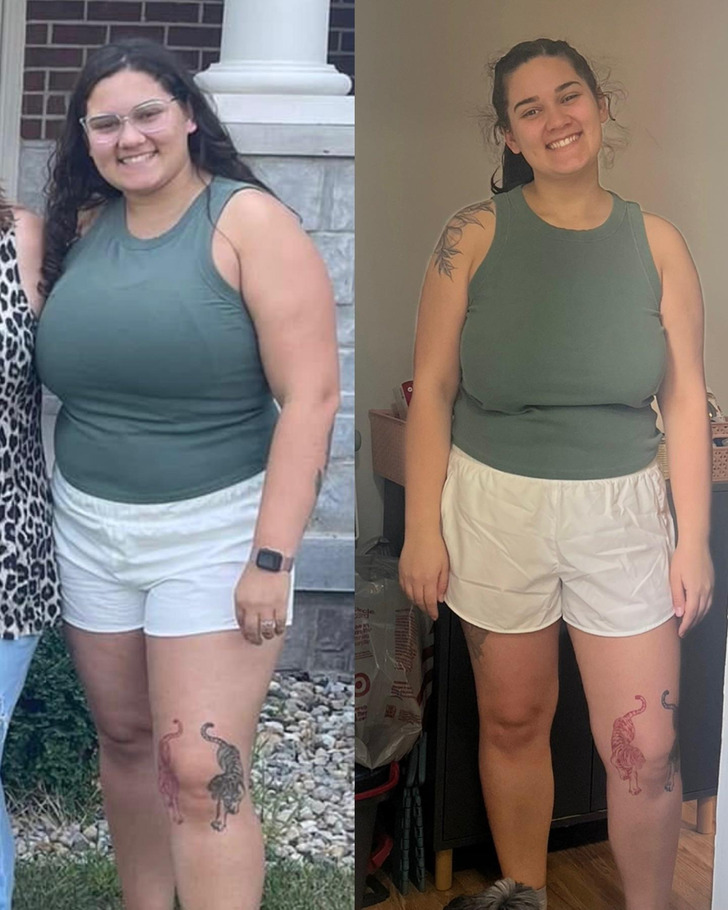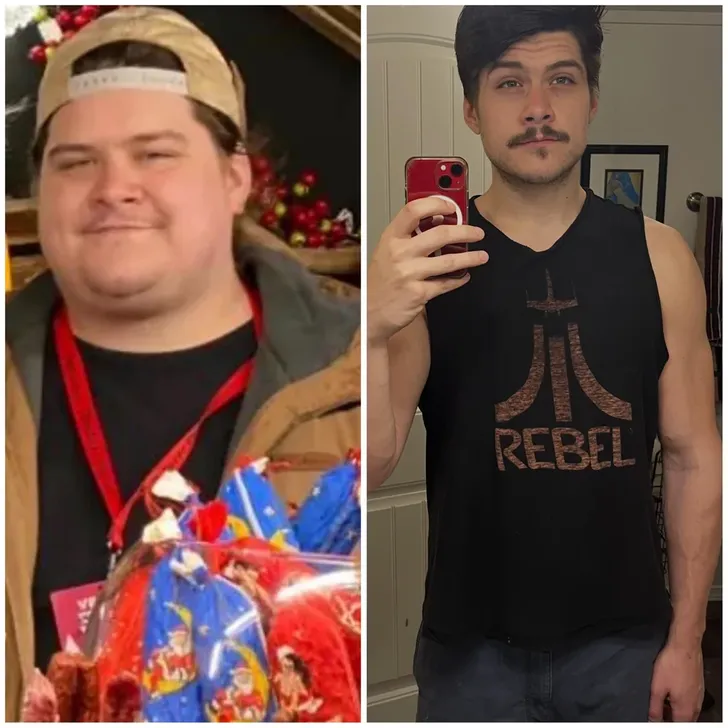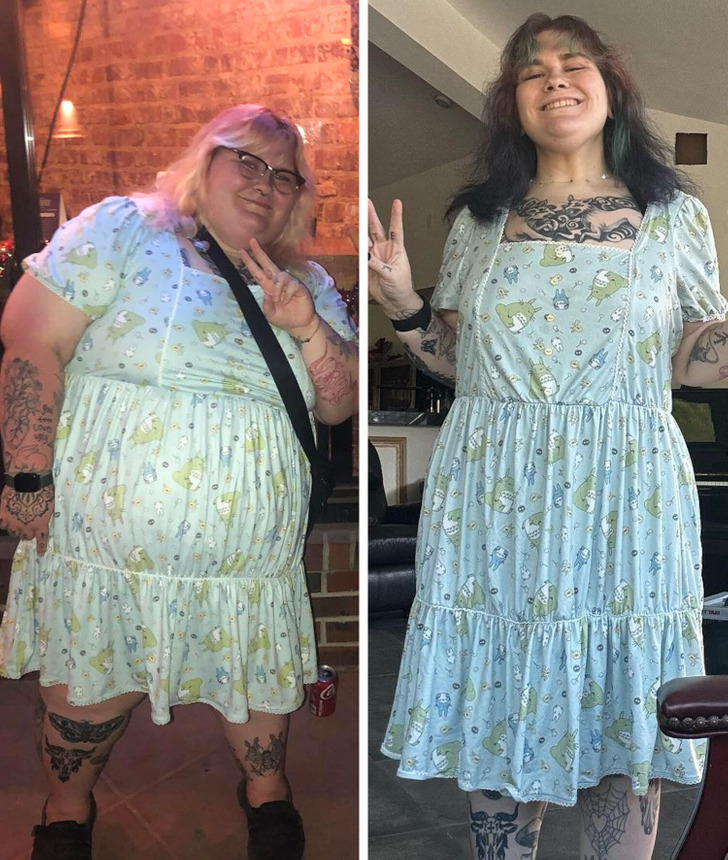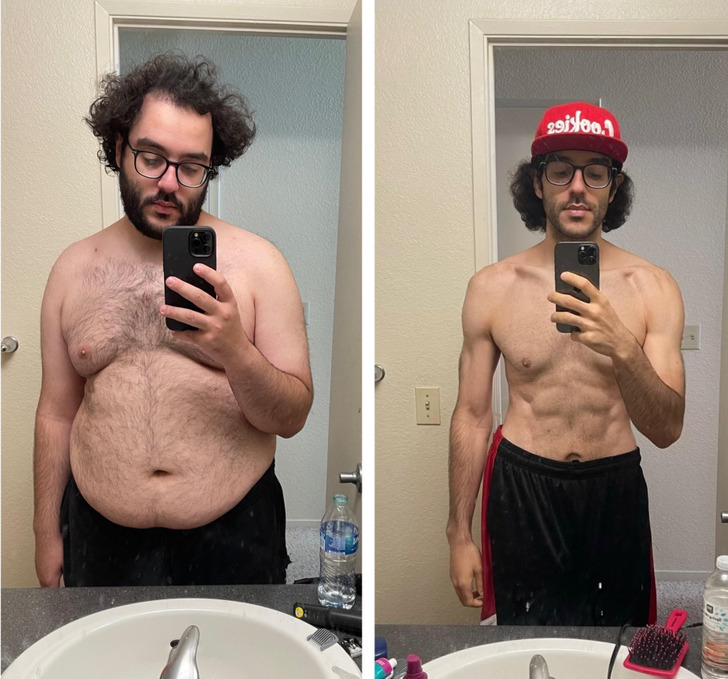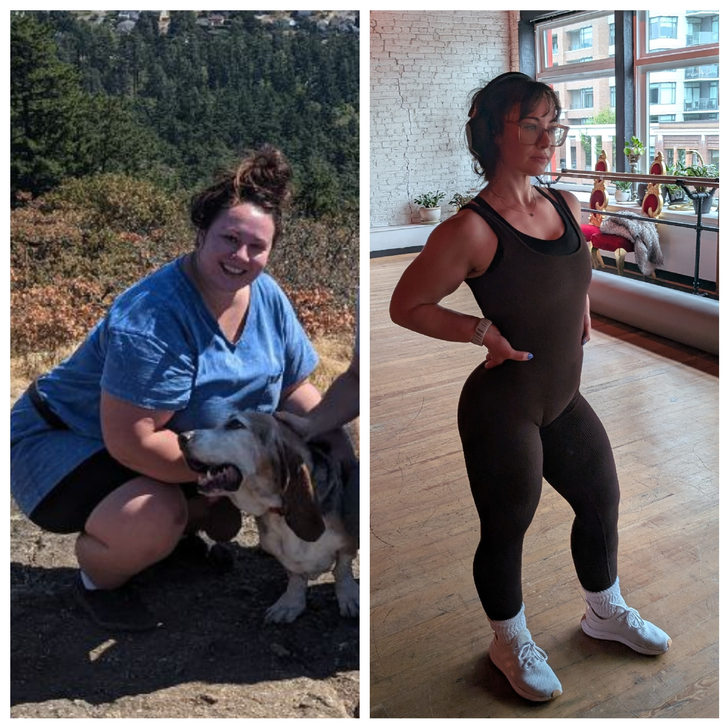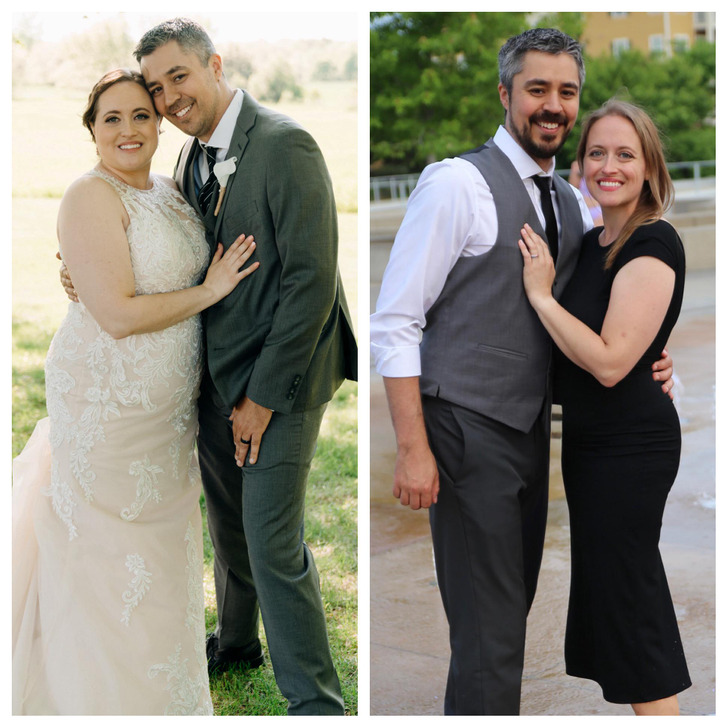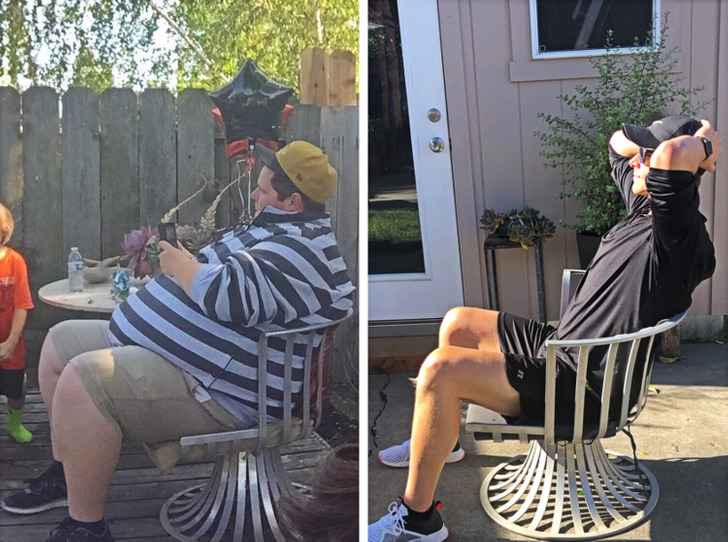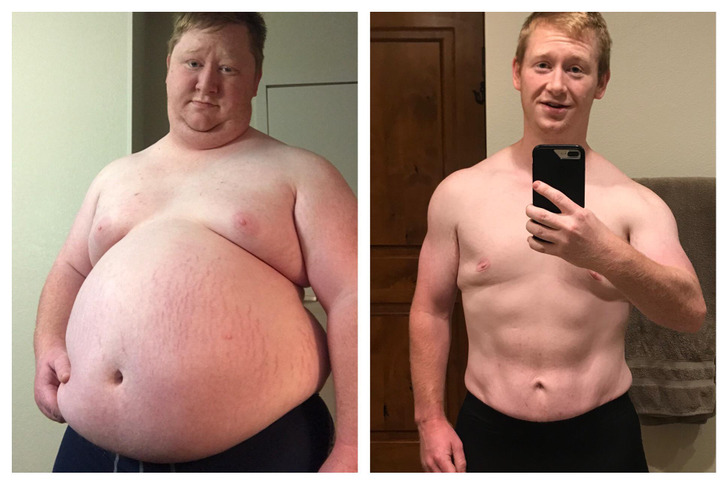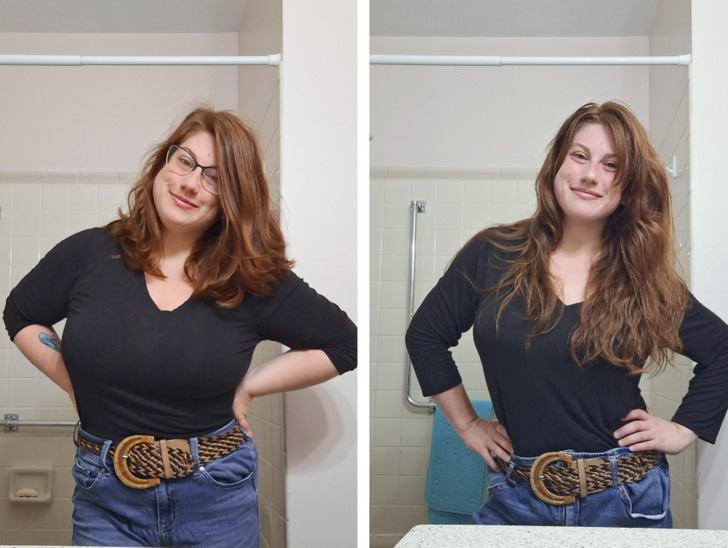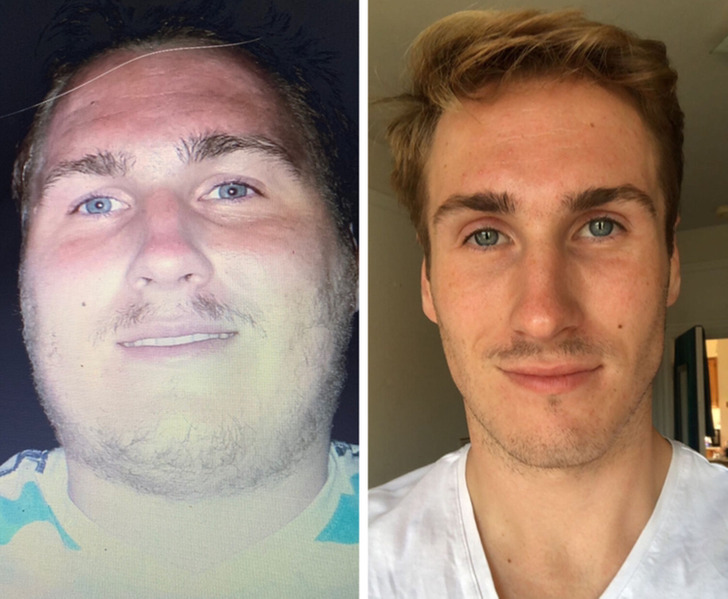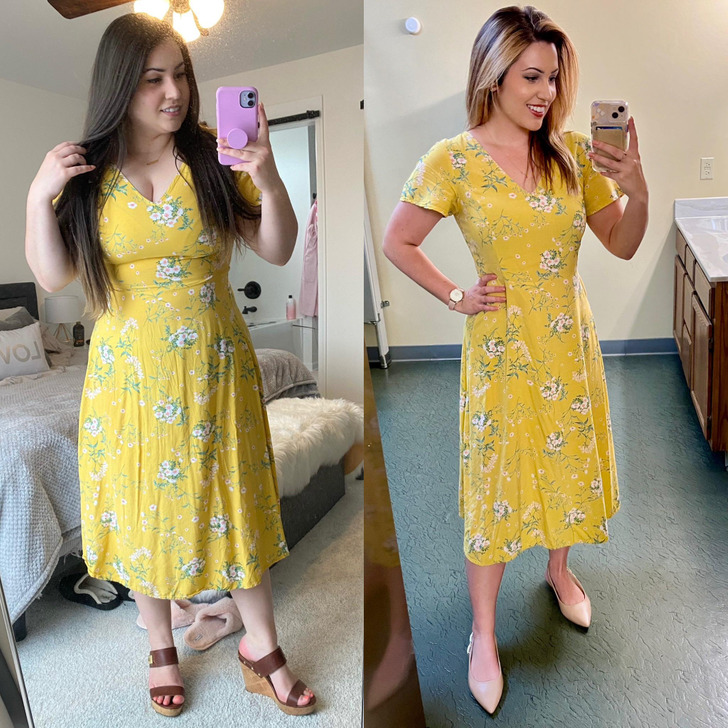Well done - AMAZING!!
These 15 People Didn’t Just Lose Pounds — They Gained a Whole New Life

Losing weight is never easy — it takes discipline, patience, and a lot of willpower. But some people don’t just settle for small wins. They go all in, push past limits, and completely transform their lives. These individuals decided to take their weight loss goals to the next level — and their before-and-after stories are nothing short of inspiring.
CONTENT IS PROVIDED FOR INFORMATIONAL PURPOSES ONLY AND IS NOT INTENDED AS A SUBSTITUTE OF MEDICAL ADVICE. SEEK GUIDANCE OF YOUR DOCTOR REGARDING YOUR HEALTH AND MEDICAL CONDITIONS.
1. “Checked my phone at the end of a hard sweaty workout today and had a memory notification from exactly 2 years ago.”
2. “I got so emotional about seeing the way the clothes fit and how much progress I have made.”
3. “Now I’m adding calories on purpose for the first time.”
4. “Same dress, new person.”
5. “Lost over 100+ pounds naturally through calorie deficit and exercise.”
What is a calorie deficit? A calorie deficit happens when you burn more calories than you eat. Studies show that a 500-calorie deficit can aid weight loss, but this varies for each person based on different factors.
Calories are the energy you get from food and drinks. Calorie expenditure is the amount of energy you burn each day, which breaks down into three parts:
- Resting energy expenditure (REE): The calories your body uses while at rest for vital functions like breathing and circulation.
- Thermic effect of food: The energy used to digest, absorb, and metabolize food.
- Activity energy expenditure (AEE): The calories burned through movement, like exercising, fidgeting, or doing chores.
A calorie deficit happens when you eat fewer calories than you burn. Over time, this can lead to weight loss. On the flip side, eating more calories than you burn leads to weight gain, called a calorie surplus.
Other factors can also affect weight, including:
- Physical activity
- Hormones
- Lifestyle habits
- Stress
- Health conditions
- Medications
- Genetics
- Sleep habits
Keep reading to learn how to calculate your calorie deficit and achieve it in a healthy way.
6. “These pictures are taken 4 years apart (August 2021 — May 2025).”
7. “I used to be afraid of having short hair cause of the weight in my face. today, i said goodbye to the old me and embraced my new life!”
- Genuinely one of the best transformations i’ve ever seen. © sugar***** / Reddit
- My mind is blown! © MermaidSparkles0602 / Reddit
- Looks more like 14 years back in time. © nightpanda893 / Reddit
8. “40 kgs (88 pounds) weight loss with muscle gain.”
Body recomposition, the process of losing fat while gaining muscle, is tough because these goals are contradictory. It helps to work with a healthcare provider, dietitian, and trainer to create a balanced plan.
How to Gain Muscle:
- Protein & Exercise: Focus on protein intake and resistance training to build muscle and burn fat.
- Build a Foundation: Start with good form, then gradually increase strength and endurance. Aim to work out several days a week.
- Active Recovery: Include activities like walking, running, or yoga on off days.
- Rest & Stress: Get enough sleep and manage stress to support muscle growth.
Benefits of Muscle Building:
- Improves heart health, blood sugar, and bone density.
- Boosts strength, endurance, and mobility.
- Reduces the risk of falls and injuries, especially in older adults.
9. Your happiness matters the most.
- “How did you do it?” © esstee123 / Reddit
“Strength training in combination with a moderate calorie deficit and a focus on protein and fiber intake. I’ve come to understand consistency is better than perfection.” © Healthy-Equipment261 / Reddit
10. When couples get stronger together:
When your partner is losing weight, it can be a vulnerable time for both of you. You need to balance supporting them while managing your own feelings about the changes in your relationship. Your support is crucial to their success.
Weight loss can create lifestyle shifts that make it feel like you’re walking different paths. For example, if you used to share activities like eating out, one partner may now be focused on dieting and exercise.
Supporting Your Partner:
- Ask your partner why they want to lose weight and how you can best support them.
- Avoid making assumptions or projecting your own reasons for their weight loss.
Everyone prefers different types of support. Ask if they need help with cooking, encouragement, or keeping unhealthy food out of the house.
Find New Ways to Bond:
- Create healthy rituals like cooking together, hiking, or planning activities that align with your partner’s goals.
- Become an active participant in their journey, not just a spectator.
Communicate Openly:
- Discuss what the future might look like with weight loss involved.
- Be honest about your own feelings and needs, and offer support for those feelings, too.
11. “Same Chair. 3 Years Later.”
12. “Lost 200 pounds in a year through fasting and walking, then crushed my fear of working out around others at the gym.”
- “You did this in a year?” © Kari-kateora / Reddit
Walking is simple, free, and one of the easiest ways to get active, lose weight, and improve your health. A brisk walk helps build stamina, burn calories, and boost heart health.
Benefits:
- A brisk 10-minute walk daily counts toward your 150 minutes of recommended weekly exercise.
- It’s a great way to stay fit without needing long hours of exercise.
Before You Start:
- Wear comfortable shoes that support your feet and prevent blisters.
- If walking to work, wear comfy shoes and change when you arrive.
- For longer walks, bring water, snacks, sunscreen, a spare top, and a hat.
13. “Unemployment was really good to me, gonna carry new habits back into the workforce.”
14. “I stopped making excuses and started making gains. Found a jaw under all that fluff.”
- How do all these men become models?! Someone tell that to my face!! You look like you should be on the cover of GQ magazine!!! Absolutely amazing. © justsayin01 / Reddit
- I see Adam Levine! © Bad_Becky / Reddit
15. “Portion control, daily movement, and divorce.”
Every story on this list proves one powerful truth: when you commit to change, incredible things can happen. Whether it’s for health, confidence, or a fresh start, these transformations remind us that the hardest journeys often lead to the most rewarding destinations.
Comments
Related Reads
Lucky Story of Conjoined Twins Who Were Separated Just Being 6 Months Old and Now They Are Still Together
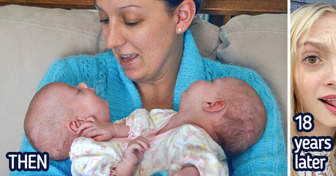
A Baby Was Born with a Rare Skin Condition That Confused Doctors for 20 Years — Now He Looks Completely Unrecognizable
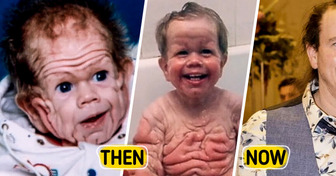
My MIL Lost Her Privilege of Being Called “Grandma” — What She Did to My Kids Left Me Speechless
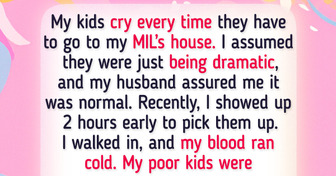
15 Celebrity Transformations That Mean More Than You Think
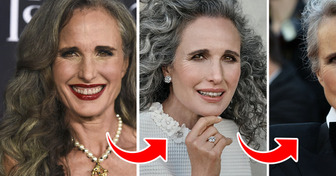
16 Celebrities Who Dazzle on the Red Carpet but Keep It Real in Everyday Life

5 Alarming Signs of Colon Cancer You Might Be Missing

Kate Winslet’s Son Debuts on Red Carpet, Looks Like Young DiCaprio
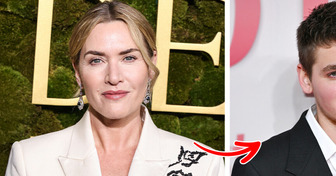
Meet 20 Most Handsome Men in the World, According to Ordinary People

“This Is Alarming!” Sharon and Kelly Osbourne Break Silence With First Red Carpet Return, Fans Are Shocked

11 Heartwarming Stories Proving Kindness Is a True Superpower

“Looked Better Before!” Amy Schumer Unrecognizable After Major Body Transformation
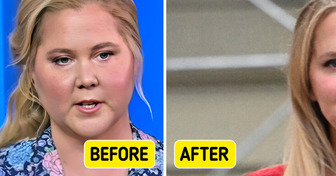
I Was Shamed by Doctors for Years — Until a Shocking Truth Was Finally Revealed
